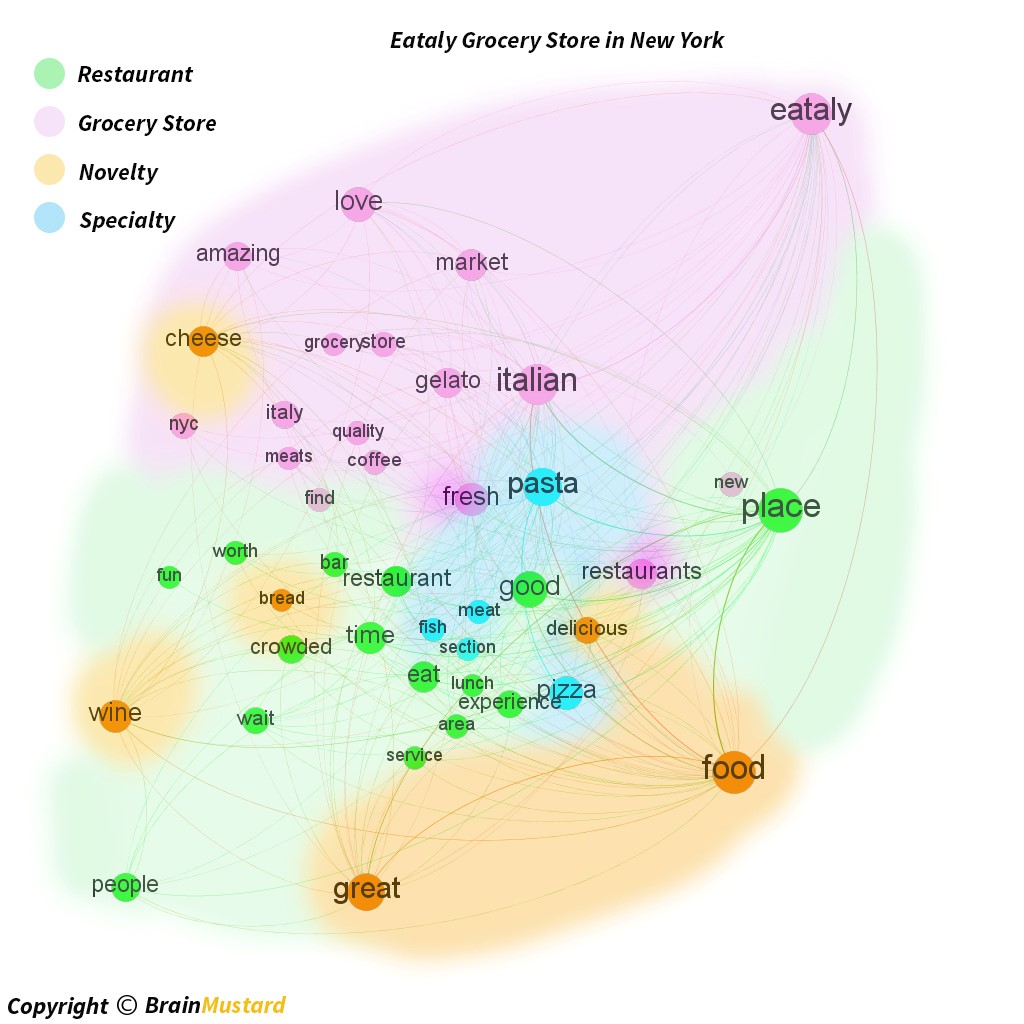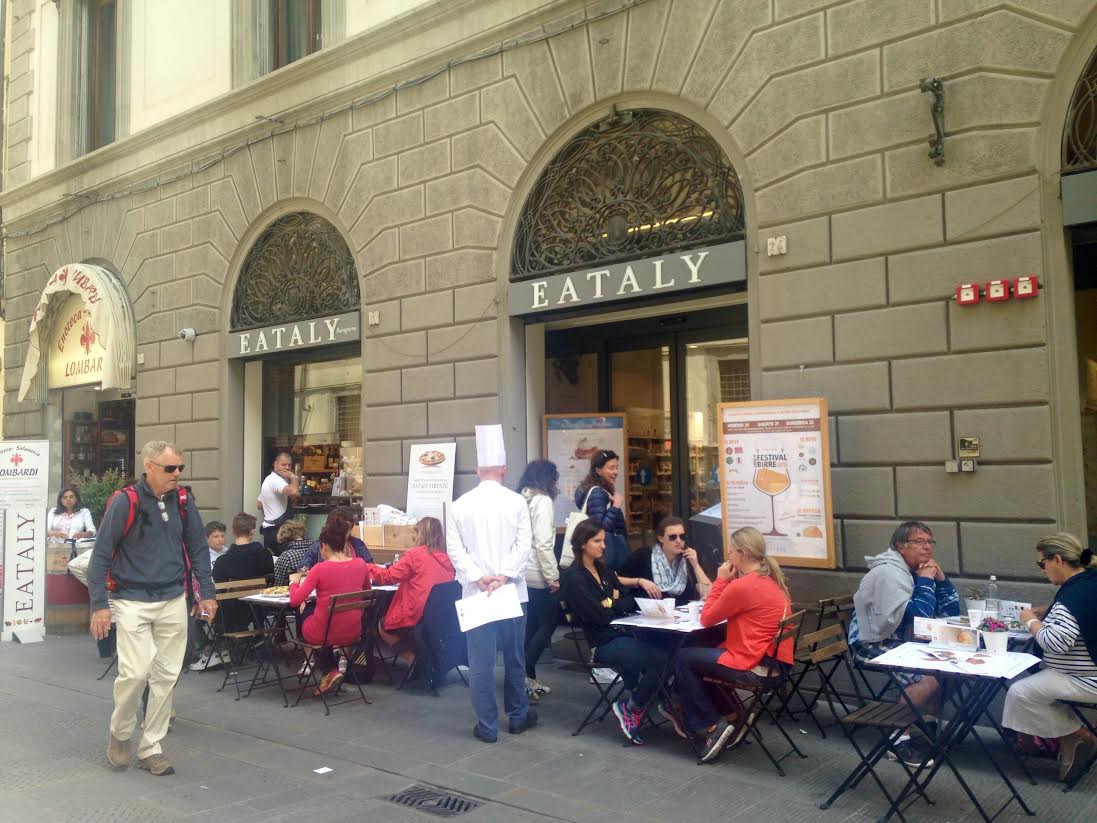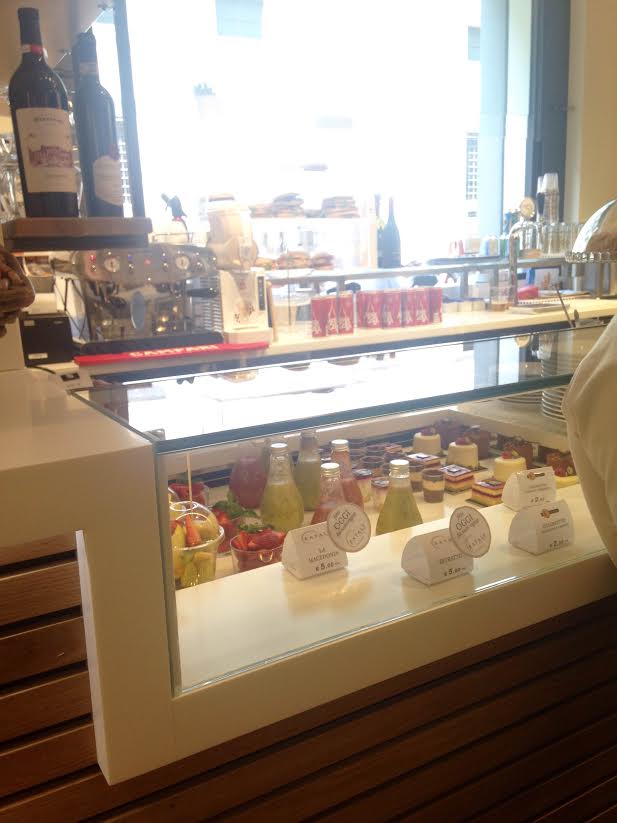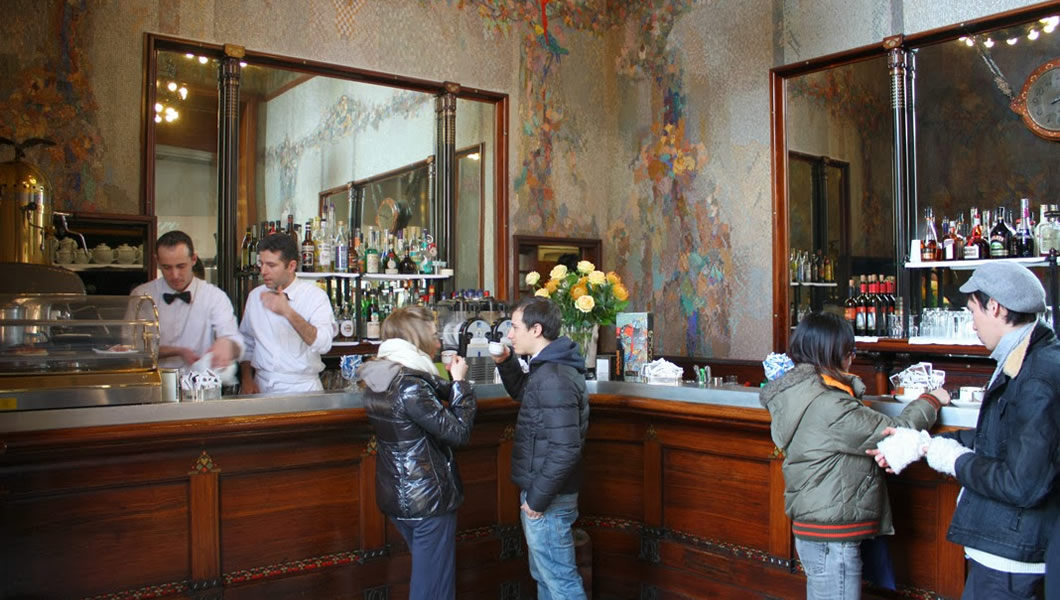3 Pain Points That Make Eataly Remarkable
BrainMustard Customer Experience Design Series
About this Article
The Customer Experience Series by BrainMustard are based on the customer experience maps and social influence graphs built from scanning and analyzing millions of contents from the Internet chatter.
These models and maps offer revealing and unexpected consumer insights to formulate new initiatives to increase sales. Check out our success stories at http://www.BrainMustard.com
Got a question?
- 10 Alcorn Ave. / #204 / Toronto / Canada
- 416-556-3909
- Contact@BrainMustard.com
Tweet
3 Pain Points That Make Eataly Remarkable
Walking down the streets of Florence, you would likely run into businesspeople in oversized sunglasses and large brand-name purses scouting out the nearest Eataly, where they know they will get high quality food and a nice place to enjoy their lunch break. These professionals dine at nearby Eataly several times a week. This may be the norm in Italian cities that house an Eataly, but this ritualistic behavior is largely absent from the Eataly stores in North America.
Eataly is an Italian hybrid. It’s a grocery store that has restaurants in separate food areas. In the bread section, you can sit and enjoy a plate of freshly made pasta. By the fruits and vegetables, you can buy a caprese salad for lunch. Alongside the meat department, you can try a delicious veal parmigiana.
While the overall customer experience in North America has been remarkable for those attuned to it, there have been three kinds of pain points that would stop many visitors from becoming regulars for dining experience at Eataly.

Image: The semantic map of the opinions of consumers about Eataly in New York (2016)
1. Obscurity of Concept:
The customer experience at Eataly for many US visitors has been confusing. For example, many New Yorkers and Chicagoans became frustrated by the long wait times, only to find the pizzas and pasta dishes unsatisfyingly small. For others, the experience became a disappointing one when they discovered the Nutella Bar only after having more than one plate of pastas and not leaving enough room to enjoy dessert.
2. Counter-intuitive Store Design:
Many visitors don’t figure out the logic behind the design of the store and its restaurants. They’ve found the experience to be similar to that of IKEA—a maze-like shopping experience which is great for impulse shopping but difficult to locate items in a shopping list. Hence, the visits to the stores are reserved for novelty seeking and treasure hunting trips.
3. Anti-Socialization layout:
The separation of restaurants based on the types of food they are serving is a major point of frustration for visitors who come in groups. If you wanted a fish dish while your friend is more interested in pasta, you can’t sit together since they are offered in different restaurants. This is very annoying since the majority of visitors come with their family and friends.
***
How difficult is it to address these pain points? The solutions are seemingly obvious. For instance, offering larger pasta and pizzas dishes will satisfy those customers complaining about small portions. Visible in-store signs written in plain English as opposed to Italian would make the store more navigable. Having a food court instead of individual restaurants would solve the problem with family and friends not being able to dine together. These quick solutions would indeed resolve each individual pain point and eliminate the friction from the experience.
But it would be the wrong way to go.
***
Eliminating these points of friction will remove pain – but it also eliminates the value proposition of the experience that makes Eataly unique and reduces Eataly to an imitation of Whole Foods or Pusateri’s.
The sound approach is to study the entire ecosystem and refine the experience more holistically without compromising Eataly’s uniqueness and enhance the overall customer experience – not individual touch points
How to do that? The best way for analyzing the customer experience is mapping it. Using a customer experience map, one can study all touch points and the dynamics of their interactions in the entire journey which could help Eataly discover more creative ways to offer a more delightful experience without compromising company’s core value propositions.
***

Image: Eataly in Florence
If we take one step back and look at the entire ecosystem of the experience we realize that the crucial factor impeding this positive experience in North America is the inevitable cultural differences between North Americans and Italians. For Italians, food is a moral issue. They take their traditions surrounding food more seriously than traffic laws. For them the meal is a journey of self-discovery and illumination. In North America meals are destinations where we simply re-affirm what we expect to find.

Image: Dulce Section - Eataly in Florence
Lunch in Italy usually begins with an “antipasto” of salami and goes onto the “secondo piatto”, usually consisting of fish or meat with vegetables. Finally, one can indulge on the “dolce” course, with fresh pastries, desserts, and finish it with a coffee or an espresso.
The customer journey in Eataly is designed to honour this Italian tradition. Customers are expected to grab a glass fine wine and walk from one restaurant to another to complete their five course meal journey. In other words, the experience at Eataly is meant to be an excursion where the customers remain extremely conscious about what they are eating. In North America, on the other hand, we are used to sitting in one place while we eat. In our culture, dinning is a temporal activity and food is allowed to fade into the background of the meal experience. In Eataly, on the other hand, dinning is both a temporal and a spatial activity and the physical movement is designed to bring food back into the foreground.
***
So can the Eataly experience flourish in North America outside of overly populated areas in cities such as New York and Chicago?

Image: Cafe' Bars in Italy
That’s hard to say. Howard Schultz, the founder of Starbucks, went to Italy and saw the espresso cafés and fell in love with the idea of opening one in the US. Everyone that has been to Italy would tell you that the customer experience at Starbucks has little resemblance to that in Italian Espresso cafés. The reason is Howard was aware of the cultural and ritualistic differences between the two countries and re-engineered the experience to fit the North American culture.
Alternatively, Howard could have maintained the experience authentically Italian and educate Americans about it hoping that the majority would assimilate and make it part of their daily rituals. Obviously that’s a more difficult course to follow – and one that Shultz chose to avoid.
Over time Eataly will have to decide how to deal with the confusion of its customers. Will it try to educate them about the Italian way of dinning? Or will it change in order to maintain its sense of authenticity while still appealing to North American social mores.
Tweet
Looking for similar articles from BrainMustard? Click Here
Copyright © BrainMustard
Walking down the streets of Florence, you would likely run into businesspeople in oversized sunglasses and large brand-name purses scouting out the nearest Eataly, where they know they will get high quality food and a nice place to enjoy their lunch break. These professionals dine at nearby Eataly several times a week. This may be the norm in Italian cities that house an Eataly, but this ritualistic behavior is largely absent from the Eataly stores in North America.
Eataly is an Italian hybrid. It’s a grocery store that has restaurants in separate food areas. In the bread section, you can sit and enjoy a plate of freshly made pasta. By the fruits and vegetables, you can buy a caprese salad for lunch. Alongside the meat department, you can try a delicious veal parmigiana.
While the overall customer experience in North America has been remarkable for those attuned to it, there have been three kinds of pain points that would stop many visitors from becoming regulars for dining experience at Eataly.

Image: The semantic map of the opinions of consumers about Eataly in New York (2016)
1. Obscurity of Concept:
The customer experience at Eataly for many US visitors has been confusing. For example, many New Yorkers and Chicagoans became frustrated by the long wait times, only to find the pizzas and pasta dishes unsatisfyingly small. For others, the experience became a disappointing one when they discovered the Nutella Bar only after having more than one plate of pastas and not leaving enough room to enjoy dessert.
2. Counter-intuitive Store Design:
Many visitors don’t figure out the logic behind the design of the store and its restaurants. They’ve found the experience to be similar to that of IKEA—a maze-like shopping experience which is great for impulse shopping but difficult to locate items in a shopping list. Hence, the visits to the stores are reserved for novelty seeking and treasure hunting trips.
3. Anti-Socialization layout:
The separation of restaurants based on the types of food they are serving is a major point of frustration for visitors who come in groups. If you wanted a fish dish while your friend is more interested in pasta, you can’t sit together since they are offered in different restaurants. This is very annoying since the majority of visitors come with their family and friends.
How difficult is it to address these pain points? The solutions are seemingly obvious. For instance, offering larger pasta and pizzas dishes will satisfy those customers complaining about small portions. Visible in-store signs written in plain English as opposed to Italian would make the store more navigable. Having a food court instead of individual restaurants would solve the problem with family and friends not being able to dine together. These quick solutions would indeed resolve each individual pain point and eliminate the friction from the experience.
But it would be the wrong way to go.
Eliminating these points of friction will remove pain – but it also eliminates the value proposition of the experience that makes Eataly unique and reduces Eataly to an imitation of Whole Foods or Pusateri’s.
The sound approach is to study the entire ecosystem and refine the experience more holistically without compromising Eataly’s uniqueness and enhance the overall customer experience – not individual touch points
How to do that? The best way for analyzing the customer experience is mapping it. Using a customer experience map, one can study all touch points and the dynamics of their interactions in the entire journey which could help Eataly discover more creative ways to offer a more delightful experience without compromising company’s core value propositions.

Image: Eataly in Florence
If we take one step back and look at the entire ecosystem of the experience we realize that the crucial factor impeding this positive experience in North America is the inevitable cultural differences between North Americans and Italians. For Italians, food is a moral issue. They take their traditions surrounding food more seriously than traffic laws. For them the meal is a journey of self-discovery and illumination. In North America meals are destinations where we simply re-affirm what we expect to find.

Image: Dulce Section - Eataly in Florence
Lunch in Italy usually begins with an “antipasto” of salami and goes onto the “secondo piatto”, usually consisting of fish or meat with vegetables. Finally, one can indulge on the “dolce” course, with fresh pastries, desserts, and finish it with a coffee or an espresso.The customer journey in Eataly is designed to honour this Italian tradition. Customers are expected to grab a glass fine wine and walk from one restaurant to another to complete their five course meal journey. In other words, the experience at Eataly is meant to be an excursion where the customers remain extremely conscious about what they are eating. In North America, on the other hand, we are used to sitting in one place while we eat. In our culture, dinning is a temporal activity and food is allowed to fade into the background of the meal experience. In Eataly, on the other hand, dinning is both a temporal and a spatial activity and the physical movement is designed to bring food back into the foreground.
So can the Eataly experience flourish in North America outside of overly populated areas in cities such as New York and Chicago?

Image: Cafe' Bars in Italy
That’s hard to say. Howard Schultz, the founder of Starbucks, went to Italy and saw the espresso cafés and fell in love with the idea of opening one in the US. Everyone that has been to Italy would tell you that the customer experience at Starbucks has little resemblance to that in Italian Espresso cafés. The reason is Howard was aware of the cultural and ritualistic differences between the two countries and re-engineered the experience to fit the North American culture.Alternatively, Howard could have maintained the experience authentically Italian and educate Americans about it hoping that the majority would assimilate and make it part of their daily rituals. Obviously that’s a more difficult course to follow – and one that Shultz chose to avoid.
Over time Eataly will have to decide how to deal with the confusion of its customers. Will it try to educate them about the Italian way of dinning? Or will it change in order to maintain its sense of authenticity while still appealing to North American social mores.
Tweet
Looking for similar articles from BrainMustard? Click Here
Copyright © BrainMustard